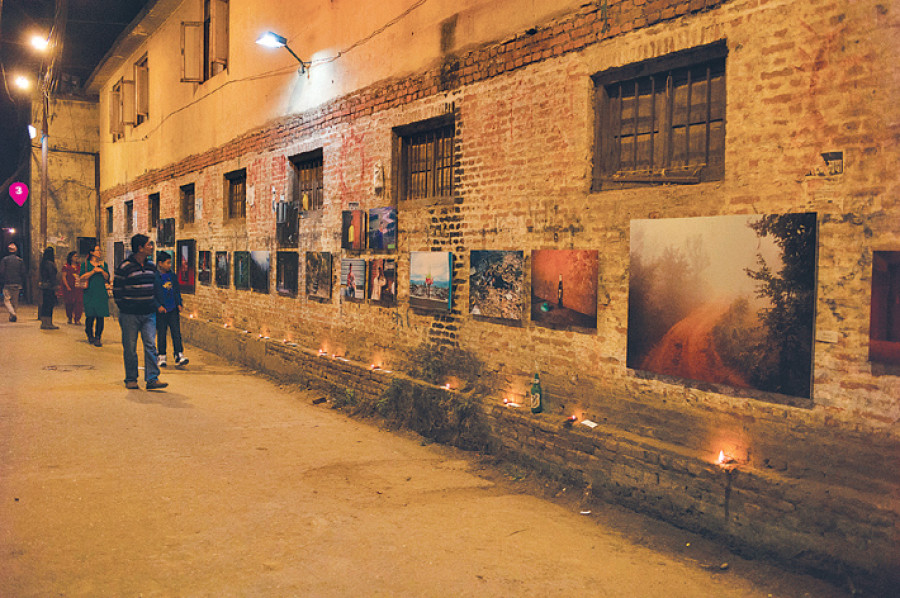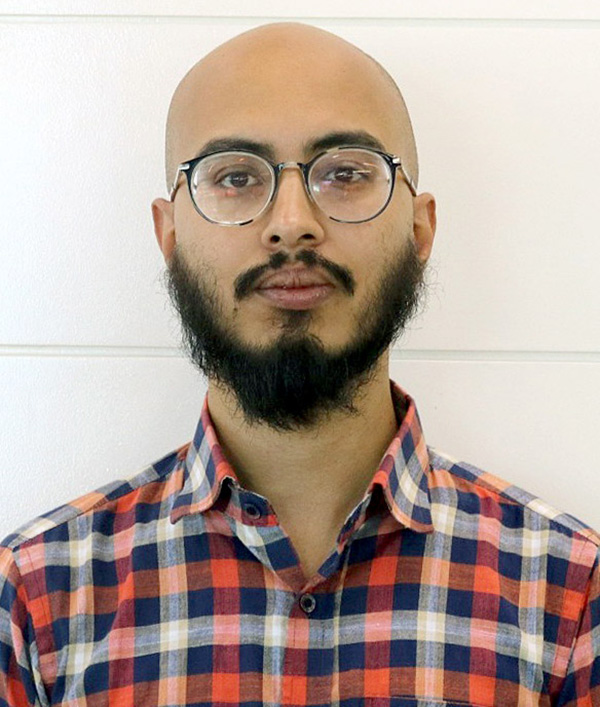Miscellaneous
Time and space
Any discussion about time necessitates a discussion about space. Places like Kathmandu still seem to continue a daily struggle against, and about, space. What-once-was is always butting heads with what-wants-to-be. It is a battle forsupremacy, where one must destroy the other in order to exist.
Pranaya SJB Rana
Any discussion about time necessitates a discussion about space. Places like Kathmandu still seem to continue a daily struggle against, and about, space. What-once-was is always butting heads with what-wants-to-be. It is a battle forsupremacy, where one must destroy the other in order to exist.The city of Patan is one of the few places where this struggle for space seems almost non-existent, at least to the casual visitor. It seems like a seamless space, preserved for hundreds of years, with just a few important modern accoutrements.
But it has its own struggles. The old courthouse in Mangal Bazaar had a large sign on it recently, from the local tol sudhar samiti, warning of strong protests if the authorities’ plans to ‘commercialise’ the building came to pass. That sign is gone now and at night, the courthouse’s many canopies are backlit, with large printed photographs suspended in front. The photos are part of an exhibition by the Australian photographer Philip Blenkinsop, a showcase of his work in Nepal during the days of the Maoist conflict. This exhibition, in turn, is part of Photo Kathmandu, an international photography festival that is currently showing until November 9. Photo Kathmandu has turned Patan, always a veritable gallery, into a literal one.
The beauty of Patan has always been in the intricacy of its community, reflected beautifully in the intricacy of its art. Patan’s relations are rhizomatic, running horizontally through its thousand gallies. Alleyways snake through communities, narrowing into doorways and opening up into unexpectedly large chowks. There have always been a hundred ways to navigate the heart of Patan city, Photo Kathmandu adds another. The exhibition encourages the wanderer to stroll through Patan leisurely, taking in photographs that have been deftly placed in places that are beautiful and unanticipated.
At the Durbar Square, American photographer Kevin Bubriski’s spare portraits of Nepal from the 80s see a long, steady stream of visitors, curious onlookers many who simply want to see what all the fuss is about. But once drawn, they linger, bending down to read the captions and staring hard at the portraits that stare right back at them. Nearby, the Mul Chowk, next to the entrance to the Patan Museum, draws laughs and giggles from audiences. Finnish photographer Tuomo Manninen’s group portraits of Nepali professionals from the 90s seem to strike many people as whimsical. They seem to admire the brash, almost challenging, look of the subjects in the photographs. Artfully, the most striking image, one that draws the most chuckles, is that of men in a gym, working out and posing in their machismo.
Opposite where the Char Narayan Mandir once stood, before it was felled by the April earthquake, inside a room in the Yala Guest House, is a camera obscura. More installation than exhibition, the Patan Camera Obscura, by Laura Diamond Dixit, Miku Dixit and Rene Fan, is a surreal experience. You enter a pitch black room, where the only light comes from a small hole cut into wood
that covers the entire window. You wait for a couple of minutes and watch as your eyes grow accustomed to the gloom. Once they do, the room comes alive, with the scene outside of the window, reproduced upside down on the walls. People walk on the ceiling and it is as if their shadows are their real selves and they mere reflections.
Down at Twilaka Tol, on the north wall of the Adarsha Kanya Niketan School, where thousands of people pass every single day, are Kishor Sharma’s documentation of the Raute. His stark black-and-white prints are large and arresting, drawing gazes from everyone who passes by. Further down the road, at Chyasal, Prasiit Sthapit’s images of life in Susta line the walls of the Chyasal Dhungedhara. The choice of space is poetic, as people draw water from the centuries-old spout, the Narayani river twists and turns between Nepal and India. Behind that same space, on Thursday, a slideshow presentation of photographs from across the world takes place to the raucous strains of a local Newar bhajan session while little children from the neighbourhood scream in disapproval at every projected near-nude image.
Photo Kathmandu is really a negotiated conversation about space with Patan. Although the theme is ‘time’, the conversation inevitably concerns space; for without space, how could we have time? In putting on an exhibition in spaces that are continually changing in usage, hour-by-hour, day-by-day, Photo Kathmandu becomes a seamless part of that space. It engages and is engaged with by quite possibly the biggest population sample to ever view photographs like these in Nepal. There is no pretentious self-selecting, white-wine-drinking audiences here. The audience includes everyone who uses that space for tasks other than viewing ‘art’.
The way it’s been envisioned, Photo Kathmandu wants to hold a dialogue with space and the variable ways in which it is used. A truce between traders and locals, between culture and religion, between art and artifice. Patan is the perfect city to serve as a gallery, or even as a canvas, to display in broad strokes the evolution of Nepal as it moves steadily in time and space.
Photo Kathmandu runs all across Patan until November 9




 12.99°C Kathmandu
12.99°C Kathmandu








%20(1).jpg&w=300&height=200)

